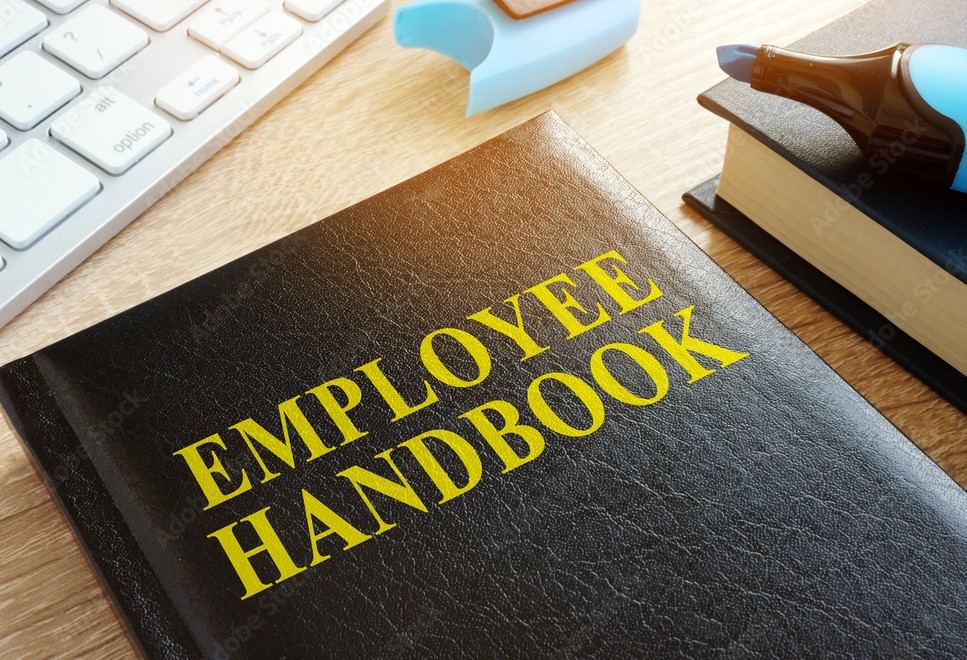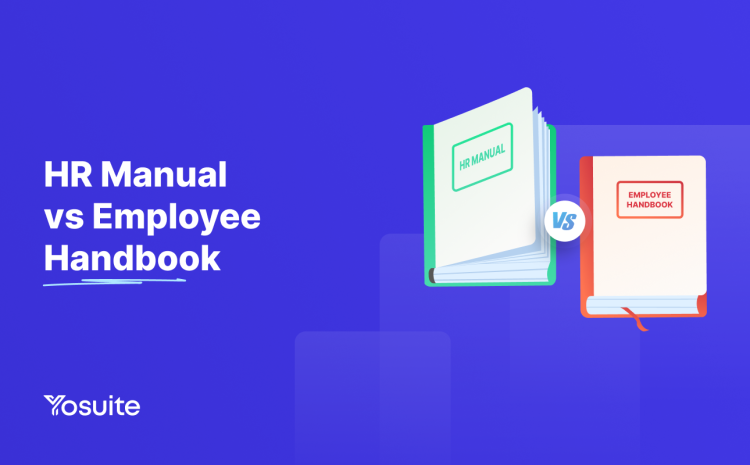An HR manual and an employee handbook indeed describe almost the same topics. But, there are some core differences. An HR manual vs employee handbook comparison helps you to navigate all the distinct purposes and differences.
The HR manual tells you a company’s policies. And, the employee handbook tells you how to communicate with the company.
Read the blog, we’ll discuss the differences to give you clear insights into these two important tools of an organization.
Table of Contents
What is a HR Manual?

An HR manual is a comprehensive document for HR professionals and leaders. It designs an organization’s policies, procedures, and guidelines regulating human resources practices. Through this document, employees get to know their rights and responsibilities.
What is an Employee Handbook?

On the other hand, the employee handbook describes how to be an employee in your company, and how employees can be a part of the company culture. It covers all the necessary information and how to execute them.
For example – if you need a two hour emergency break then what you should do, or face any harassment, who to talk to, etc. information is available in an employee handbook.
Do you know?
58% of companies rely on HR technologies for talent recruitment and retention! ✌️
Source- techjury
HR Manual vs Employee Handbook – Differences
Now, you will learn the dissimilarities of these two tools. We have discussed the differences based on the following topics –
🎯 Purpose
HR Manual: The HR manual gives guidelines for all HR-related matters. It primarily focuses on internal HR processes, employee relations, performance management, recruitment, compensation, and benefits. The manual also describes how to handle HR-related issues.
Employee Handbook: On the other hand, the Employee Handbook is specifically designed for employees. It serves as a reference guide for employees. They get important details related to their employment, company policies, expectations, benefits, code of conduct, etc.
😎 Audience
HR Manual: Here, the audiences are HR professionals, management, and other relevant staff responsible for HR functions.
Employee Handbook: The employees of the organization are the primary audience for the Employee Handbook. The organization makes a handbook to inform and guide employees through their employment journey with the company.
📝 Content
HR Manual: The content here is a bit technical that focuses on the nitty-gritty of HR policies and procedures. It may contain details about HR-related legal requirements, processes for hiring, onboarding, performance appraisals, disciplinary actions, etc.
Employee Handbook: This documentation is employee-centric and covers policies and guidelines relevant to the workforce. As an employee, you will get ideas about the dress code, leave policies, benefits, and others. The content will also tell you the workplace expectations from you.
🔍 Level of Detail
HR Manual: Owners and HR professionals always require in-depth guidance on handling various HR scenarios. A manual contains details and specific information.
Employee Handbook: Generally, offices make it more concise and easy to understand. The reason is to allow employees to quickly access and comprehend the information.
✅ Updates
HR Manual: This documentation deals with the core HR processes and policies that change less often. That is why it requires less updates.
Employee Handbook: On the contrary, the Employee Handbook might be subject to more frequent updates. Especially when changes occur in the c-suite, company policies, location etc. Also, a company may also introduce new benefits or programs for employees, these cases require updates.
Does a New Company Need to Develop both HR Manual and Employee Handbook Together?
When building a new company, it is generally advisable to develop the HR Manual at the beginning. The HR Manual serves as the foundation for human resources management.
By creating the HR Manual first, you can ensure that the company’s internal HR procedures are well-defined. It also helps to align the procedures with legal requirements and industry best practices.
Once the HR Manual is in place it becomes easier to create the Employee Handbook. In other words, an Employee Handbook translates the HR policies and guidelines into an employee-friendly format.
So, to allow your employees to communicate with the company well, you can follow this step.
In summary, the HR Manual should be developed first as it lays the groundwork for HR processes, and then the Employee Handbook can be created to effectively communicate these policies and guidelines to the employees. Both documents are crucial for a new company to establish a solid HR framework and ensure that employees have a clear understanding of the company’s policies and expectations.
Know the best HR software for startups 👌
FAQ
What should an HR manual include?
A comprehensive HR manual for employees should outline company policies. The policies should be on employment, workplace behavior, benefits, and legal compliance. Also, you may include recruitment, conduct guidelines, benefits like health insurance and leave policies, etc. Based on the company size, you have to arrange the manual properly.
What should you add to an employee handbook?
New company owners must think about small business employee handbooks. And, with the growing size of your company you should update the handbook accordingly.
A handbook for employees offers a precise guide to their rights, responsibilities, and company expectations. You should add employment basics, compensation, workplace policies, and related things. Also, you may include legal compliance ensuring clarity and alignment within the organization.
Conclusion
Overall, you now know that an HR manual and an employee handbook complement each other. Yet, the HR manual vs employee handbook indicates some distinguishable differences. So, is handbook the same as manual? The answer is No.
However, to establish a healthy and productive work environment both the tools play important roles. Studying these insights can help you make HR policies and procedures manual without any hassle.



Leave a Reply